Blue-and-White Hundred Longevity Vase Marked “Made in the Yongzheng Reign of the Great Qing Dynasty” | A Classic Imperial Porcelain with a Millennium of Auspicious Meanings
[Product Overview]
This is a blue-and-white Hundred Longevity Vase fired in the imperial kiln during the Yongzheng reign (1723 – 1735) of the Qing Dynasty, belonging to the imperial porcelain for the royal family. The Yongzheng imperial kiln was renowned for its “exquisite elegance and superb craftsmanship.” This vase inherits its essence, integrating calligraphy, painting, and auspicious culture. It is a classic example of early Qing Dynasty blue-and-white porcelain art. With a stately and timeless shape, the blue-and-white color is rich, bright, and well – defined in terms of the pattern layout. After nearly three hundred years of time, it remains in good condition, making it a rare antique collectible.
[Craftsmanship Analysis]
1. Quality of the Body and Glaze of the Imperial Kiln
It uses high – quality “Macang clay” from Jingdezhen as the body material. The body is firm and delicate, and when gently tapped, it emits a clear and resonant sound like a chime. The glaze surface is as smooth and shiny as jade, with a bluish tint in the white (commonly known as “bright blue glaze”). The glaze layer is uniform and dense, and fine natural crackles can be seen, which are real marks of the passage of time.
2. Blue – and – White Pigment and Color Presentation
The top – grade blue – and – white pigment of that time (presumably Zhejiang pigment or Zhuming pigment) was selected. Applying the “water – separation and halo – dyeing” technique for coloring, the blue – and – white color is rich, bright, and well – defined in terms of depth and shade. The color of the floral patterns is full, and the strokes of the Chinese character “Shou” (longevity) are clear, reflecting the characteristics of the Yongzheng imperial kiln of “stable color and moderate haloing.”
3. Firing Technology
The imperial kiln strictly controlled the temperature and fired it at a high temperature of 1300°C in one go. The body and glaze are tightly combined, without flaws such as sand holes or air bubbles, demonstrating the firing level of the Qing Dynasty imperial kiln factory of “eliminating the harshness and presenting a warm texture.”
[Design Art]
1. Aesthetic Appeal of the Shape
The whole vase has a shape of “a slender neck, broad shoulders, a bulging belly, and flared feet.” The lines are smooth and round, and the proportion is well – coordinated. The slender and upright neck and the round and full belly symbolize “complete fortune and prosperity.” The flared bottom feet are stable, combining practicality and ornamental value. It is a classic appreciation vase shape of the Yongzheng era.
2. Pattern Layout
-
Neck: It is painted with intertwined floral patterns. The leaves are spreading, and the vines are twining, symbolizing “continuous life.” There are also human figure patterns (presumably scholars having a conversation) in between. The folds of the clothes are smooth, and the expressions are leisurely, reflecting the elegance of literati.
-
Main Body of the Belly: The “Hundred Longevity Diagram” is composed of three horizontal pattern bands. Each layer is filled with the Chinese character “Shou” in different calligraphy styles (including seal, official, regular, and cursive scripts). The strokes are vigorous, and the arrangement is well – spaced. There are nearly a hundred characters in total, hence the name “Hundred Longevity,” which conveys the auspicious meaning of “longevity, health, and continuous good fortune.”
-
Feet: It is decorated with intertwined lotus patterns, echoing the flowers on the neck, creating an overall aesthetic feeling of “upper – lower correspondence and clear hierarchy.”
[Historical Background and Cultural Significance]
The Yongzheng reign was the heyday of the Qing Dynasty imperial kiln. The emperor himself had high aesthetic standards for porcelain, and the kiln supervisor strictly controlled the quality. Therefore, the Yongzheng imperial kiln was known for its “exquisite, elegant, and meticulous” characteristics and has always been pursued by the collectors’ circle.
The theme of “Hundred Longevity” originated from Chinese traditional auspicious culture. It was first seen on bronze wares of the Shang and Zhou Dynasties and later became a classic pattern for both the royal family and the common people throughout the dynasties. As an imperial kiln artifact, the “Hundred Longevity” pattern on this vase not only expresses the wish for the emperor’s longevity but also reflects the Confucian governing concept of “ruling the country with filial piety,” carrying profound historical and cultural values.
[Collectible Value]
-
Imperial Kiln Attribute: The output of Qing Dynasty imperial kiln porcelain was scarce, and those that have survived to the present are even more precious. This vase bears distinct Yongzheng imperial kiln characteristics, with authority and scarcity.
-
Artistic Value: It integrates blue – and – white painting, calligraphy art, and shape design, demonstrating the peak level of traditional Chinese craftsmanship.
-
Market Position: Yongzheng blue – and – white porcelain has always been a popular variety in the international auction market. The Hundred Longevity theme, with its auspicious meaning, is even more favored by collectors, showing significant appreciation potential.
-
Decoration and Inheritance: Whether displayed in a mansion or a study, or used as a family cultural inheritance, it can showcase the charm of Eastern art and the cultural taste of the owner.
[Detail Appreciation]
-
Calligraphy of the Character “Shou”: A close look at the character “Shou” on the belly reveals that each character is different, with varying stroke thicknesses and structural densities, demonstrating the superb skills of the calligrapher.
-
Blue – and – White Haloing: The color of the edges of the floral leaves gradually changes naturally, reflecting the unique charm of the “water – separation method,” which cannot be achieved by folk kilns.
-
Glaze Crackles: Fine ice – crack patterns can be seen on the glaze surface. The patterns are light and uniform, formed by natural aging, which is an important basis for identifying antique porcelain.
-
Characteristics of the Body and Feet: The bottom feet are neatly trimmed. The exposed body shows a “sticky – rice – like” texture, and there is a light “flint red” at the junction of the body and the glaze, which conforms to the characteristics of the Yongzheng imperial kiln.
[Maintenance Instructions]
-
Avoid severe collisions or vibrations and place it on a stable platform.
-
Keep it away from direct sunlight, high – temperature, or humid environments. The room temperature is preferably maintained at 15 – 25°C, and the humidity at 50% – 60%.
-
When cleaning, use a soft brush to gently sweep the dust or a clean soft cloth to wipe it. Do not use chemical cleaners.
-
For long – term display, it is recommended to equip it with a glass display cabinet to prevent dust and accidental damage.
Note: As an antique, this item may have slight signs of age, which are normal and do not affect its overall value and ornamental value. We welcome collectors worldwide and lovers of Eastern art to inquire for details and jointly appreciate this artistic treasure that embodies a thousand years of Chinese civilization.
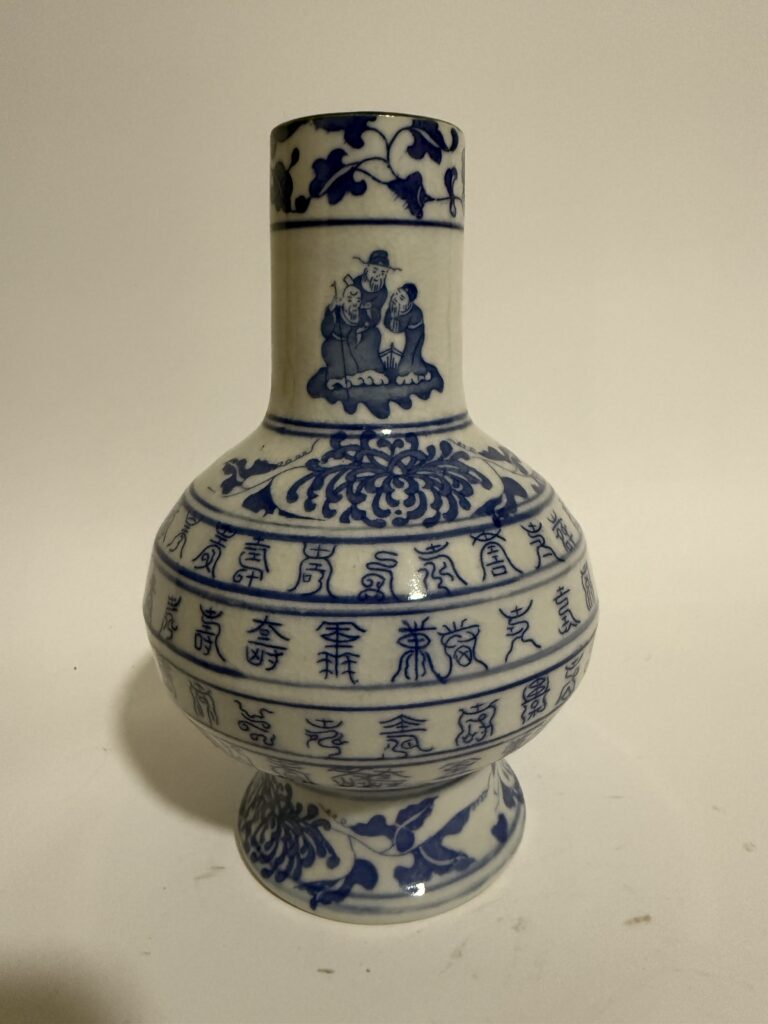
大清雍正年製官窯青花百壽瓶 | 皇家御瓷經典 傳承千年吉祥寓意
【產品概述】
本品為清代雍正年間(1723-1735年)官窯燒製的青花百壽瓶,屬皇家禦用瓷品。雍正官窯以「精緻秀雅、工藝卓絕」聞名,本品承襲其精髓,集書法、繪畫、吉祥文化於一體,是清代早期青花瓷藝的經典範例。器型端莊雋永,青花呈色濃艷明快,紋飾佈局層次分明,歷經近三百年歲月洗禮,仍保存完好,為難得一見的古董收藏珍品。
【工藝解析】
1. 官窯胎釉品質
採用景德鎮優質「麻倉土」胎料,胎質堅致細膩,輕擊之聲清越如磬。釉面瑩潤如玉,白中閃青(俗稱「亮青釉」),釉層均勻緊密,可見細微自然開片紋,為歲月沉澱的真實印記。
2. 青花用料與呈色
選用當時頂級青花料(推測為浙料或珠明料),經「分水暈染」技法施彩,青花发色濃艷明快,深淺層次分明。花卉紋飾處色調飽滿,壽字書寫處筆觸清晰,體現雍正官窯「色澤穩定、暈散適度」的特質。
3. 燒制技術
官窯嚴格控溫,經1300℃高溫一次燒成,胎釉結合緊密,無砂眼、氣泡等瑕疵,展現清代御窯廠「火氣盡褪,質感溫潤」的燒造水準。
【設計藝術】
1. 器型美感
整器呈「細頸、豐肩、鼓腹、撇足」造型,線條流暢圓潤,比例協調。頸部細長挺拔,腹部渾圓飽滿,象徵「福祿圓滿」;底足外撇穩重,兼具實用性與觀賞性,屬雍正朝經典賞瓶器型。
2. 紋飾佈局
-
頸部:繪有纏枝花卉紋,葉片舒展,藤蔓纏繞,寓意「生生不息」;間飾人物圖案(疑似高士對談),衣紋流暢,神情閑適,體現文人雅趣。
-
腹部主體:以三層橫向紋飾帶構成「百壽圖」,每層均佈滿不同書體的「壽」字(篆、隸、楷、行各體兼具),筆法蒼勁有力,排列疏密有致,合計近百字,故稱「百壽」,寄寓「長壽安康、福壽綿延」的吉祥寓意。
-
足部:飾纏枝蓮紋,與頸部花卉呼應,形成「上下呼應、主次分明」的整體美感。
【歷史背景與文化寓意】
雍正朝是清代官窯的鼎盛時期,帝王本人對瓷器審美極高,督陶官嚴格把控品質,故雍正官窯以「精緻、雅緻、細緻」著稱,歷來為收藏界追捧。
「百壽」題材源於中國傳統吉祥文化,最早見於商周青銅器,後成為歷代皇家與民間的經典紋飾。本品作為官窯器物,其「百壽」紋不僅是對帝王長壽的祝願,更體現儒家「以孝治天下」的治國理念,具有深厚的歷史與文化價值。
【收藏價值】
-
官窯屬性:清代官窯瓷器產量稀少,流傳至今者更為珍貴,本品帶有鮮明的雍正官窯特徵,具權威性與稀缺性。
-
藝術價值:集青花繪畫、書法藝術、器型設計於一體,展現中國傳統工藝的巅峰水準。
-
市場地位:雍正青花向來是國際拍賣市場的熱門品種,百壽題材因其吉祥寓意,更受藏家青睞,升值潛力顯著。
-
裝飾與傳承:無論陳設於豪宅、書房,或作為家族文化傳承,均能彰顯東方藝術魅力與主人的文化品位。
【細節欣賞】
-
壽字書法:細觀腹部「壽」字,字字不同,筆劃粗細、結構疏密各異,展現書法家的精湛技藝。
-
青花暈染:花卉葉片邊緣色調漸變自然,體現「分水法」的獨特魅力,非民窯所能及。
-
釉面開片:釉面可見細密冰裂紋,紋路淺淡均勻,為自然老化形成,是鑑定古董瓷器的重要依據。
-
胎足特徵:底足修胎工整,露胎處可見「糯米胎」質感,胎釉交界處有淺淡「火石紅」,符合雍正官窯特徵。
【保養須知】
-
避免劇烈碰撞或震動,放置於穩固平台。
-
遠離陽光直射、高溫或潮濕環境,室溫保持在15-25℃,濕度50%-60%為宜。
-
清潔時用軟毛刷輕掃灰塵,或用乾淨軟布擦拭,勿使用化學清潔劑。
-
長期陳設時,建議配備玻璃展櫃,防止灰塵與意外損傷。
備註:本品為古董器物,可能存在輕微歲月痕跡,均屬正常現象,不影響其整體價值與觀賞性。歡迎全球藏家與東方藝術愛好者諮詢詳情,共鑑這件凝聚中國千年文明的藝術瑰寶。

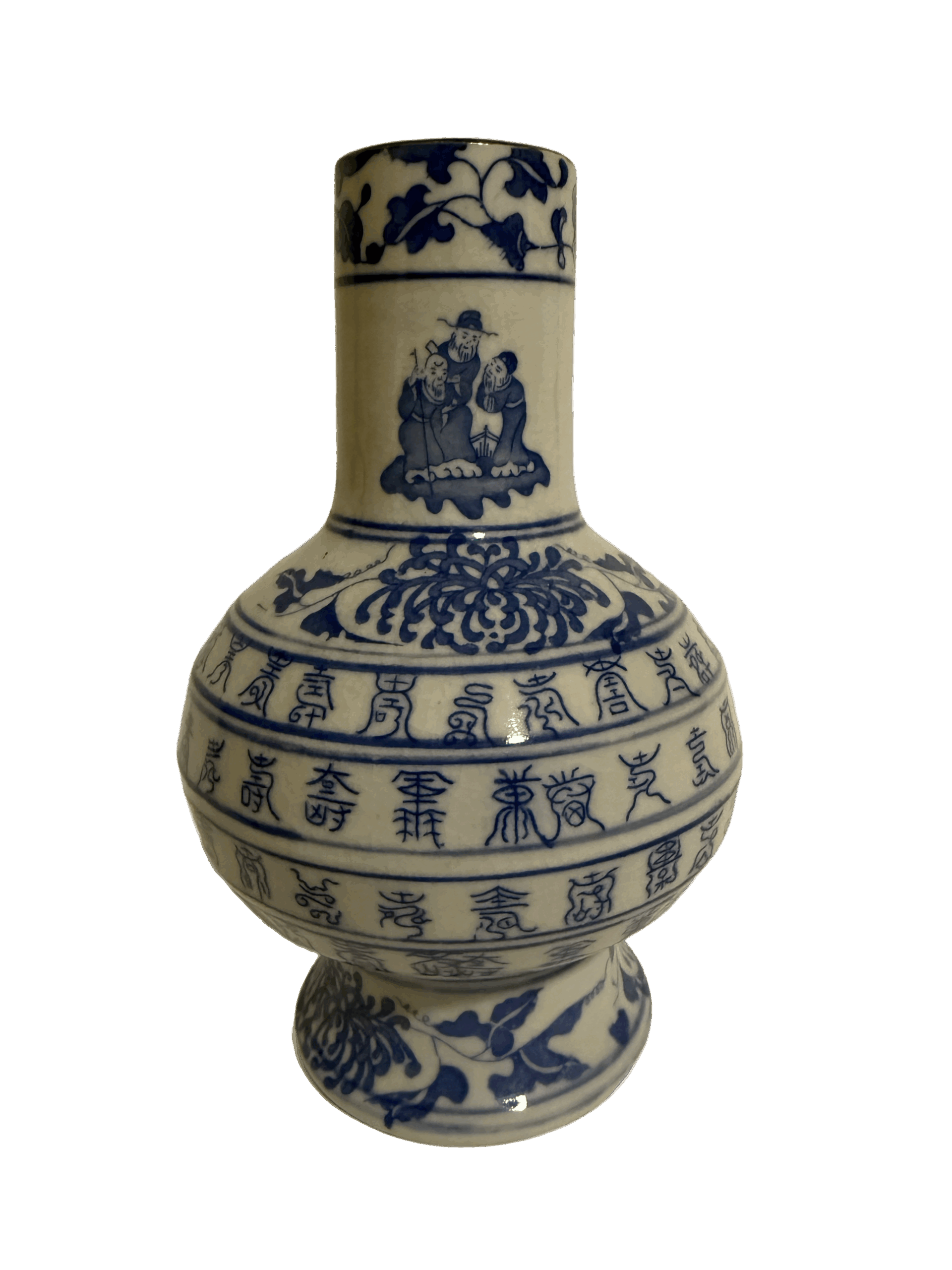
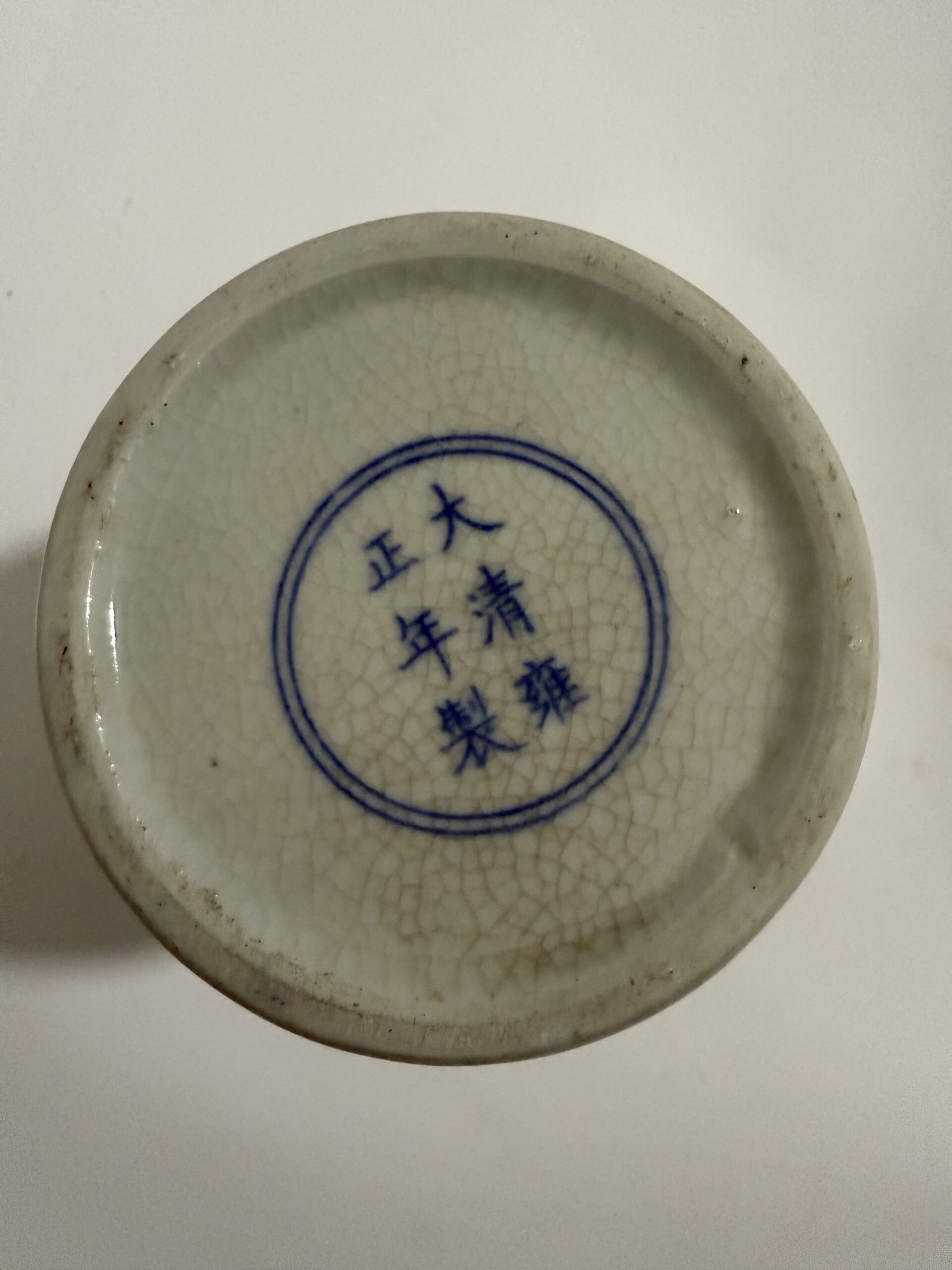
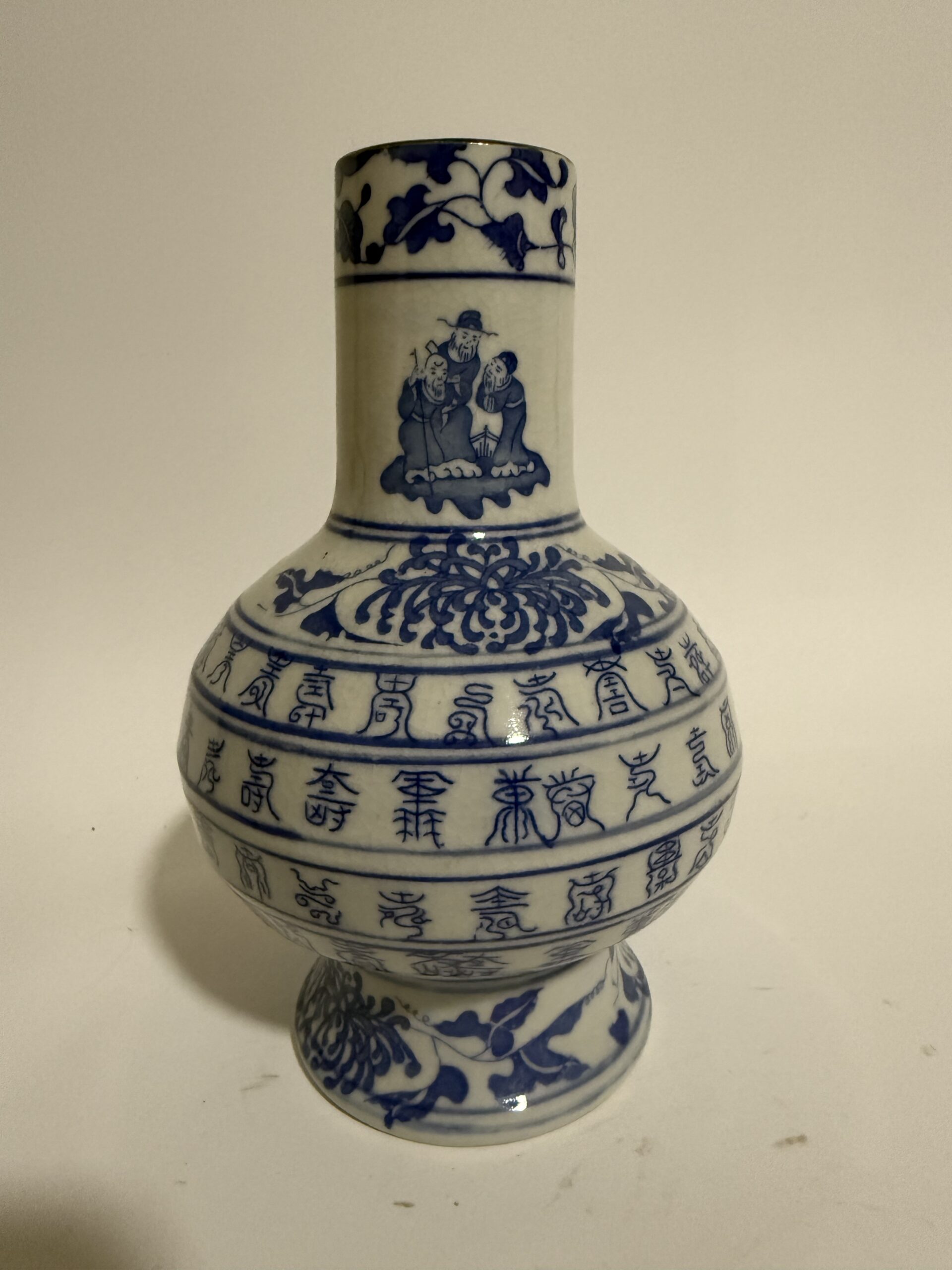
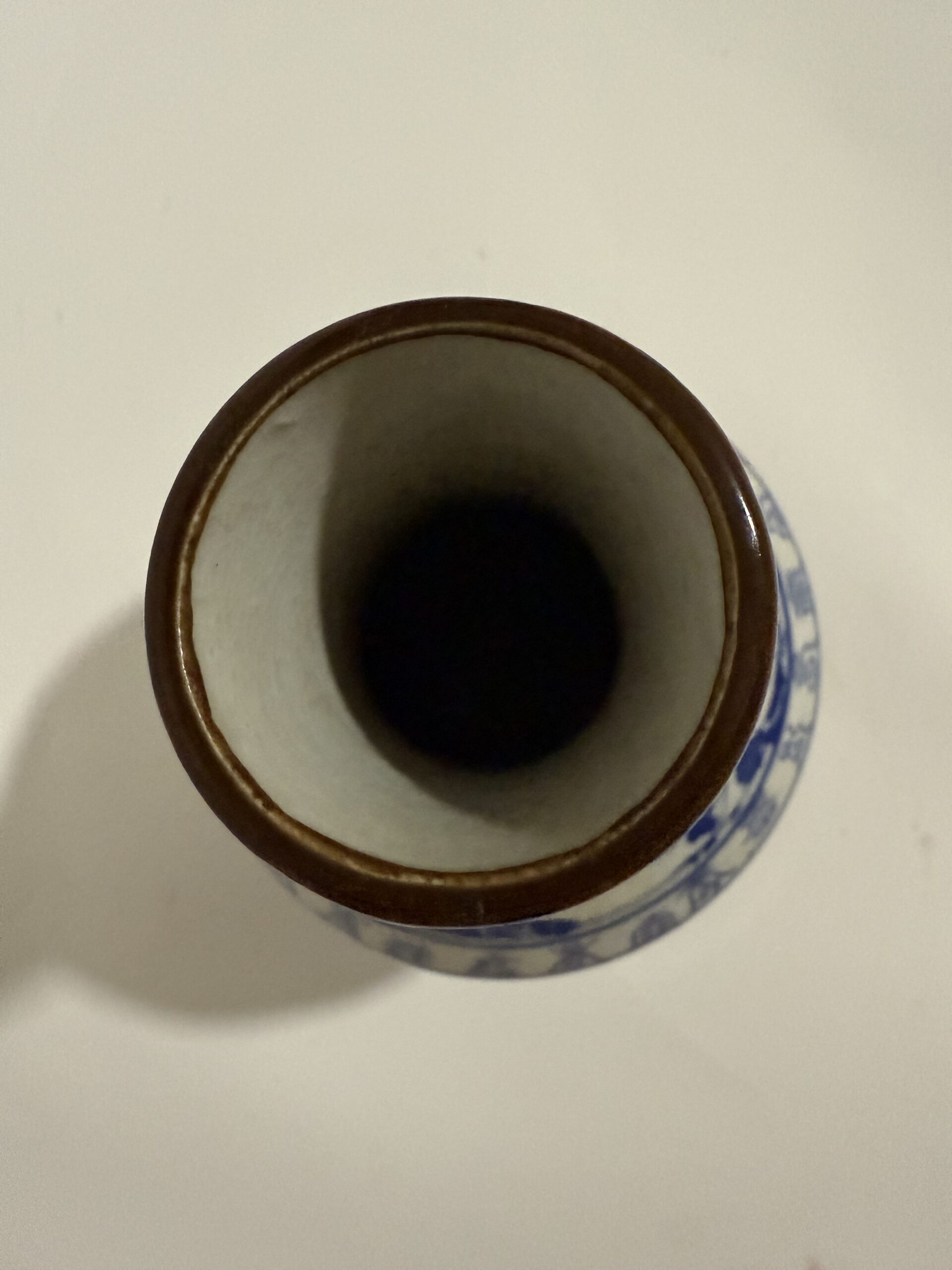

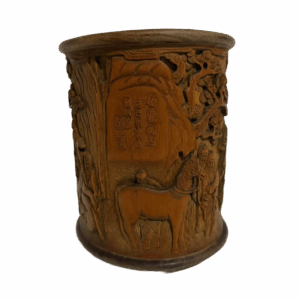
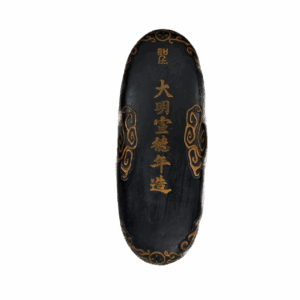
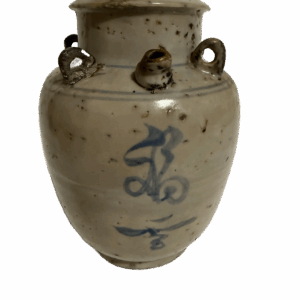
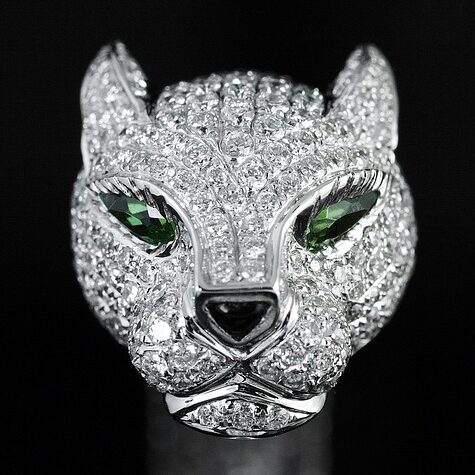
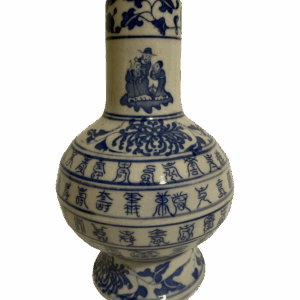
Reviews
There are no reviews yet.